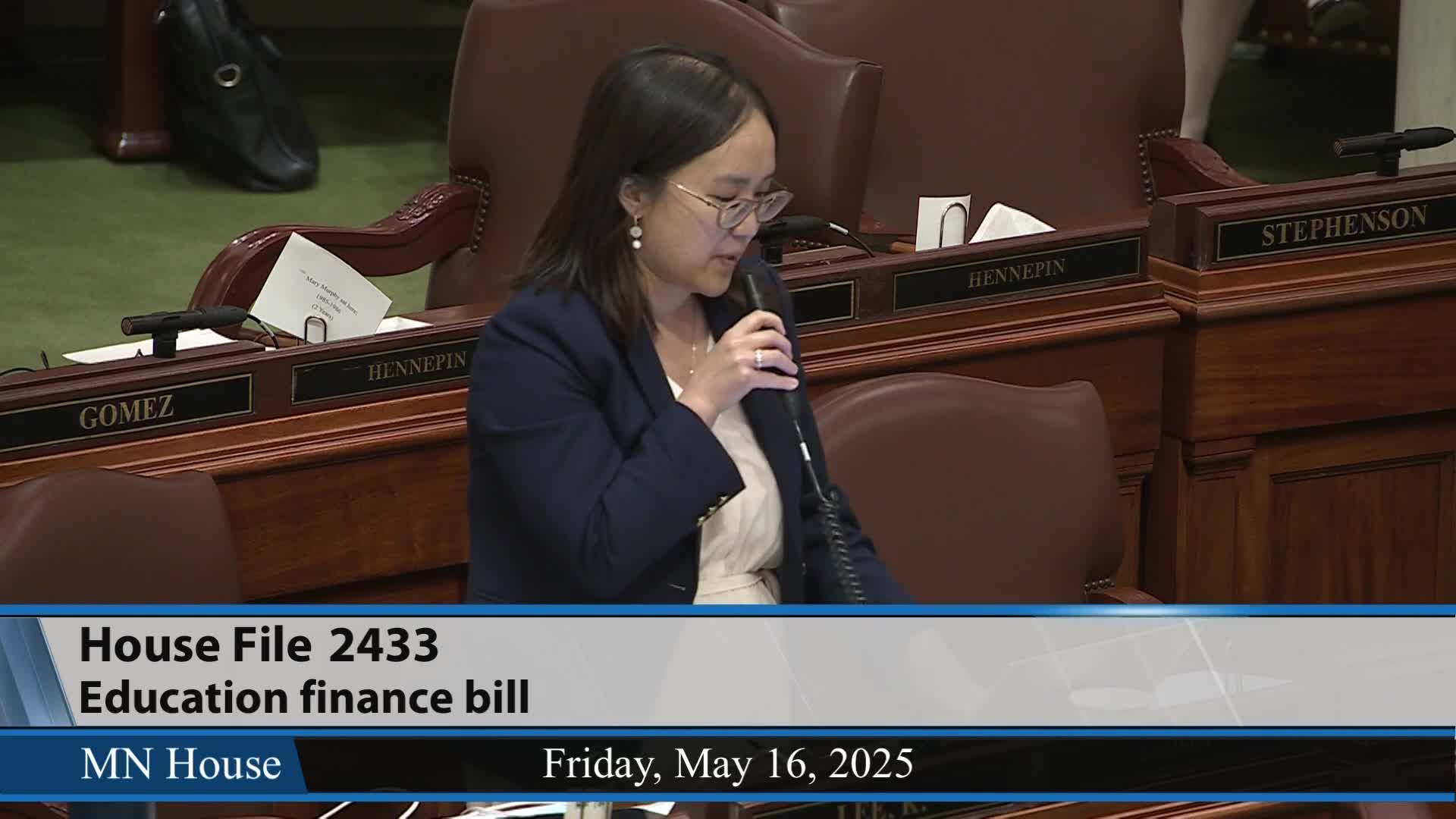Minnesota House Republicans propose education funding bill to alleviate school budget crises
May 17, 2025 | 2025 Legislature MN, Minnesota
This article was created by AI summarizing key points discussed. AI makes mistakes, so for full details and context, please refer to the video of the full meeting. Please report any errors so we can fix them. Report an error »

In a pivotal session on May 16, 2025, the Minnesota House passed the education finance bill, HF2433, amidst urgent discussions about the state of education funding and the challenges facing schools. The meeting highlighted a growing crisis in Minnesota's educational system, with representatives expressing concerns over budget cuts, teacher layoffs, and the impact on students.
Representative Nisga emphasized the dire situation, stating that schools are in crisis and questioning the effectiveness of previous funding increases. He criticized the imposition of over 65 new mandates that he argued have burdened schools and contributed to their financial struggles. In response, he asserted that the current bill aims to provide much-needed relief by offering funding flexibility and addressing local needs directly.
The bill proposes to allocate over $150 million in basic supplemental aid, allowing schools to tailor their spending to their unique circumstances. This approach reflects a shift towards empowering local school leaders rather than relying on state mandates. Additionally, the bill seeks to eliminate the seasonal worker unemployment insurance mandate, which has been described as a financial strain on school budgets.
Supporters of the bill, including Representative Clardy, highlighted the importance of stable funding that keeps pace with inflation, ensuring that schools can meet their operational needs without compromising educational quality. Clardy noted that strong schools are essential for strong communities, reinforcing the interconnectedness of education and community well-being.
The discussions also touched on the broader implications of educational funding, with representatives warning of potential cuts and the need for proactive measures to safeguard against future financial challenges. The urgency of the situation was palpable, with concerns raised about the potential consequences of failing to act decisively.
As the bill moves forward, it represents a critical step in addressing the immediate needs of Minnesota's schools while also setting the stage for ongoing debates about educational funding and policy. The outcome of this legislation will likely have lasting effects on the state's educational landscape, influencing how resources are allocated and how schools can operate in the coming years.
Representative Nisga emphasized the dire situation, stating that schools are in crisis and questioning the effectiveness of previous funding increases. He criticized the imposition of over 65 new mandates that he argued have burdened schools and contributed to their financial struggles. In response, he asserted that the current bill aims to provide much-needed relief by offering funding flexibility and addressing local needs directly.
The bill proposes to allocate over $150 million in basic supplemental aid, allowing schools to tailor their spending to their unique circumstances. This approach reflects a shift towards empowering local school leaders rather than relying on state mandates. Additionally, the bill seeks to eliminate the seasonal worker unemployment insurance mandate, which has been described as a financial strain on school budgets.
Supporters of the bill, including Representative Clardy, highlighted the importance of stable funding that keeps pace with inflation, ensuring that schools can meet their operational needs without compromising educational quality. Clardy noted that strong schools are essential for strong communities, reinforcing the interconnectedness of education and community well-being.
The discussions also touched on the broader implications of educational funding, with representatives warning of potential cuts and the need for proactive measures to safeguard against future financial challenges. The urgency of the situation was palpable, with concerns raised about the potential consequences of failing to act decisively.
As the bill moves forward, it represents a critical step in addressing the immediate needs of Minnesota's schools while also setting the stage for ongoing debates about educational funding and policy. The outcome of this legislation will likely have lasting effects on the state's educational landscape, influencing how resources are allocated and how schools can operate in the coming years.
View full meeting
This article is based on a recent meeting—watch the full video and explore the complete transcript for deeper insights into the discussion.
View full meeting
